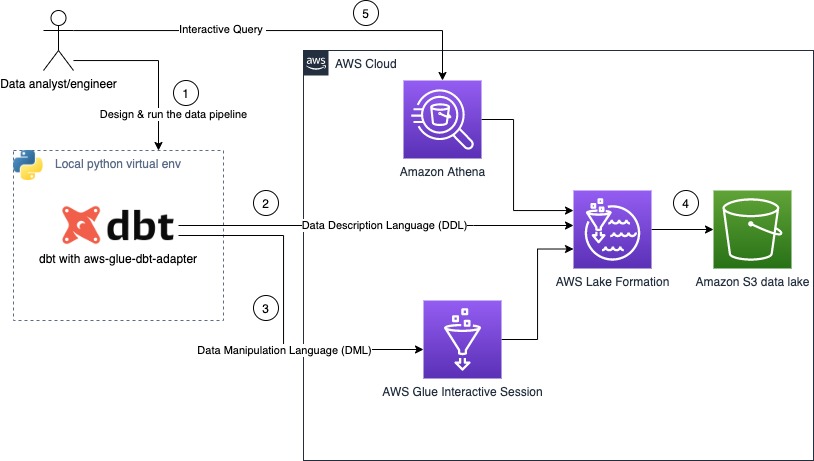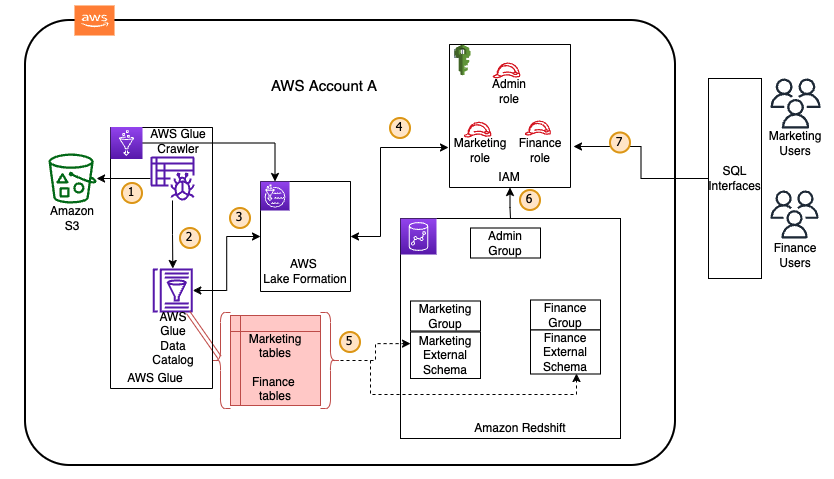AWS Big Data Blog
Category: AWS Lake Formation
Use an event-driven architecture to build a data mesh on AWS
In this post, we take the data mesh design discussed in Design a data mesh architecture using AWS Lake Formation and AWS Glue, and demonstrate how to initialize data domain accounts to enable managed sharing; we also go through how we can use an event-driven approach to automate processes between the central governance account and […]
Integrate AWS IAM Identity Center (successor to AWS Single Sign-On) with AWS Lake Formation fine-grained access controls
Data lakes are a centralized repository for storing structured and unstructured data at scale. Data lakes enable you to create dashboards, perform big data processing and real-time analytics, and create machine learning (ML) models on your data to drive business decisions. Many customers are choosing AWS Lake Formation as their data lake management solution. Lake […]
Use Amazon Redshift Spectrum with row-level and cell-level security policies defined in AWS Lake Formation
Data warehouses and data lakes are key to an enterprise data management strategy. A data lake is a centralized repository that consolidates your data in any format at any scale and makes it available for different kinds of analytics. A data warehouse, on the other hand, has cleansed, enriched, and transformed data that is optimized […]
Set up and monitor AWS Glue crawlers using the enhanced AWS Glue UI and crawler history
A data lake is a centralized, curated, and secured repository that stores all your data, both in its original form and prepared for analysis. Setting up and managing data lakes today involves a lot of manual, complicated, and time-consuming tasks. AWS Glue and AWS Lake Formation make it easy to build, secure, and manage data […]
Use an AD FS user and Tableau to securely query data in AWS Lake Formation
Security-conscious customers often adopt a Zero Trust security architecture. Zero Trust is a security model centered on the idea that access to data shouldn’t be solely based on network location, but rather require users and systems to prove their identities and trustworthiness and enforce fine-grained identity-based authorization rules before granting access to applications, data, and […]
Build a modern data architecture and data mesh pattern at scale using AWS Lake Formation tag-based access control
September 2024: This post was reviewed and updated to use version 4 of the settings for AWS Lake Formation, which allows for cross-account grants with AWS Resource Access Manager and hybrid access mode. Customers are exploring building a data mesh on their AWS platform using AWS Lake Formation and sharing their data lakes across the […]
Build your data pipeline in your AWS modern data platform using AWS Lake Formation, AWS Glue, and dbt Core
dbt has established itself as one of the most popular tools in the modern data stack, and is aiming to bring analytics engineering to everyone. The dbt tool makes it easy to develop and implement complex data processing pipelines, with mostly SQL, and it provides developers with a simple interface to create, test, document, evolve, […]
How the Georgia Data Analytics Center built a cloud analytics solution from scratch with the AWS Data Lab
This is a guest post by Kanti Chalasani, Division Director at Georgia Data Analytics Center (GDAC). GDAC is housed within the Georgia Office of Planning and Budget to facilitate governed data sharing between various state agencies and departments. The Office of Planning and Budget (OPB) established the Georgia Data Analytics Center (GDAC) with the intent […]
Build a data sharing workflow with AWS Lake Formation for your data mesh
A key benefit of a data mesh architecture is allowing different lines of business (LOBs) and organizational units to operate independently and offer their data as a product. This model not only allows organizations to scale, but also gives the end-to-end ownership of maintaining the product to data producers that are the domain experts of […]
Centralize governance for your data lake using AWS Lake Formation while enabling a modern data architecture with Amazon Redshift Spectrum
Many customers are modernizing their data architecture using Amazon Redshift to enable access to all their data from a central data location. They are looking for a simpler, scalable, and centralized way to define and enforce access policies on their data lakes on Amazon Simple Storage Service (Amazon S3). They want access policies to allow […]









